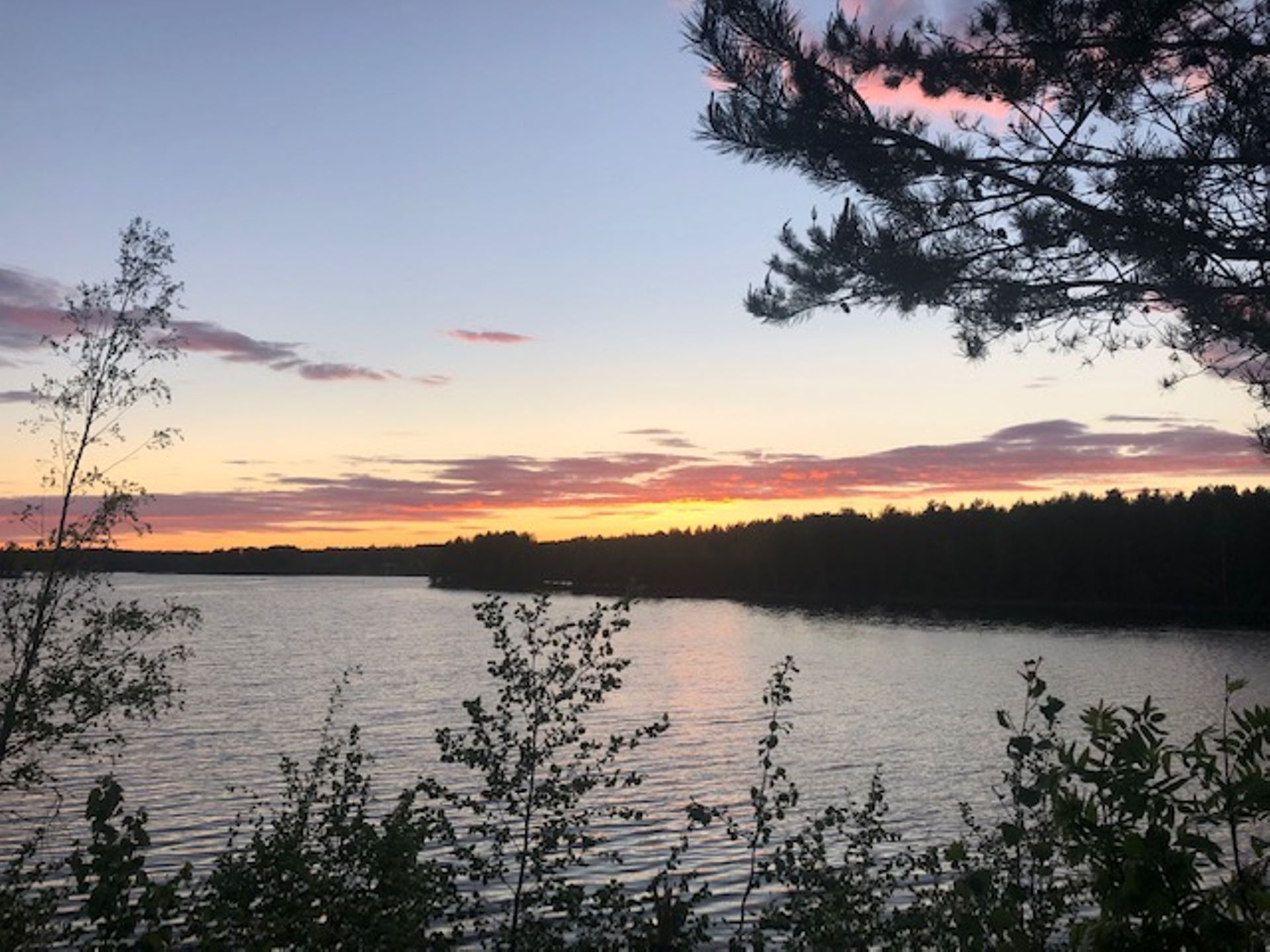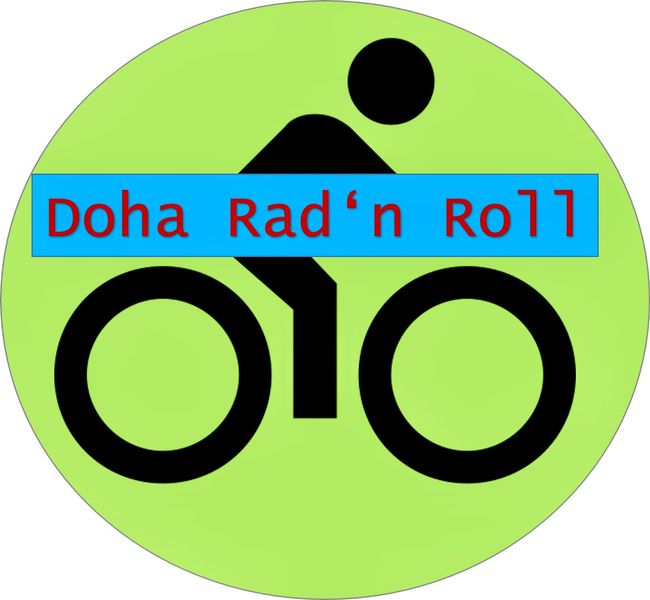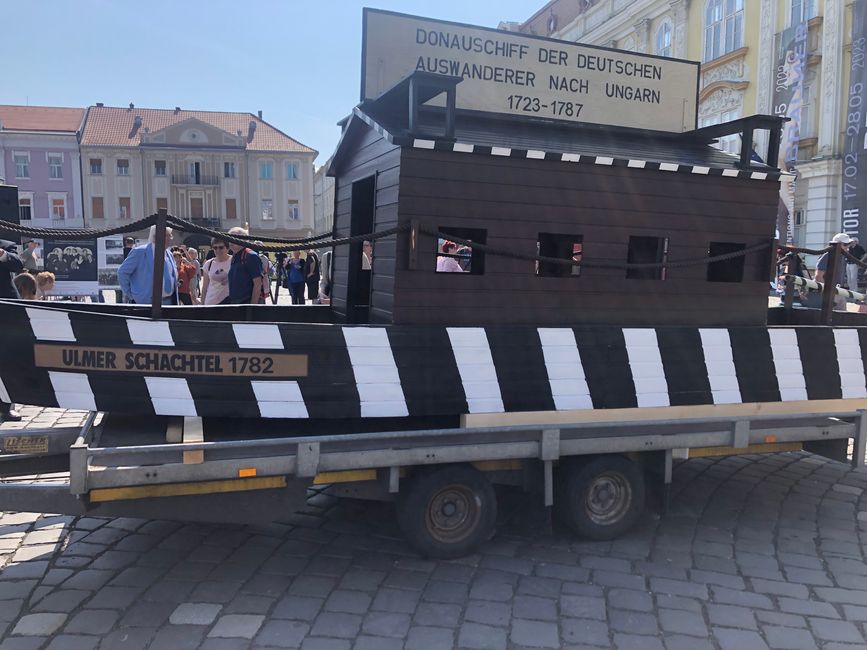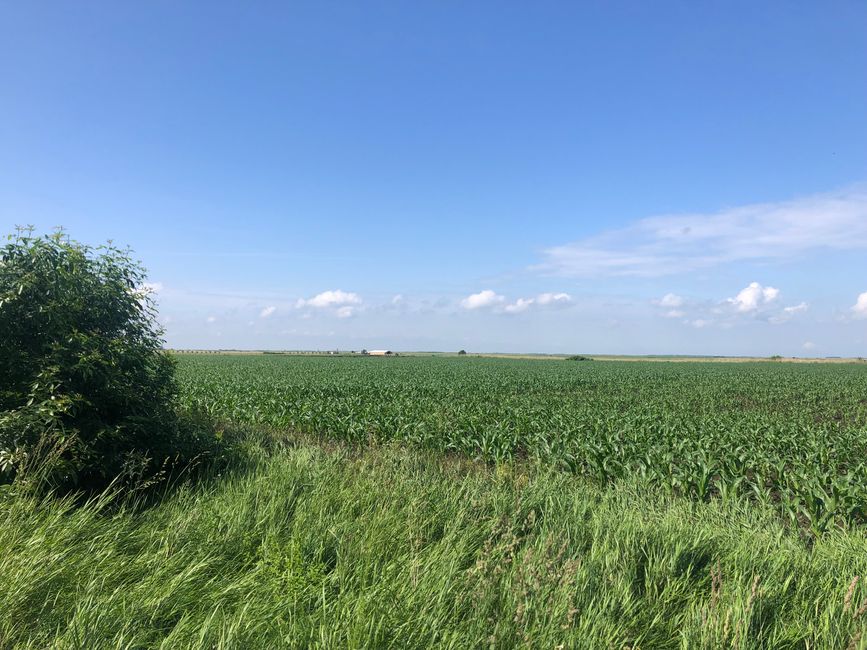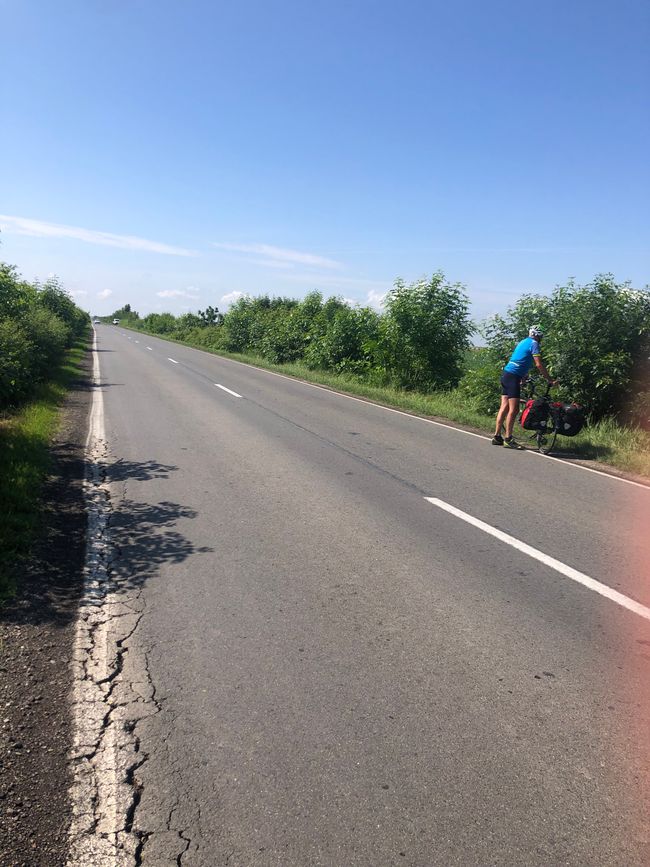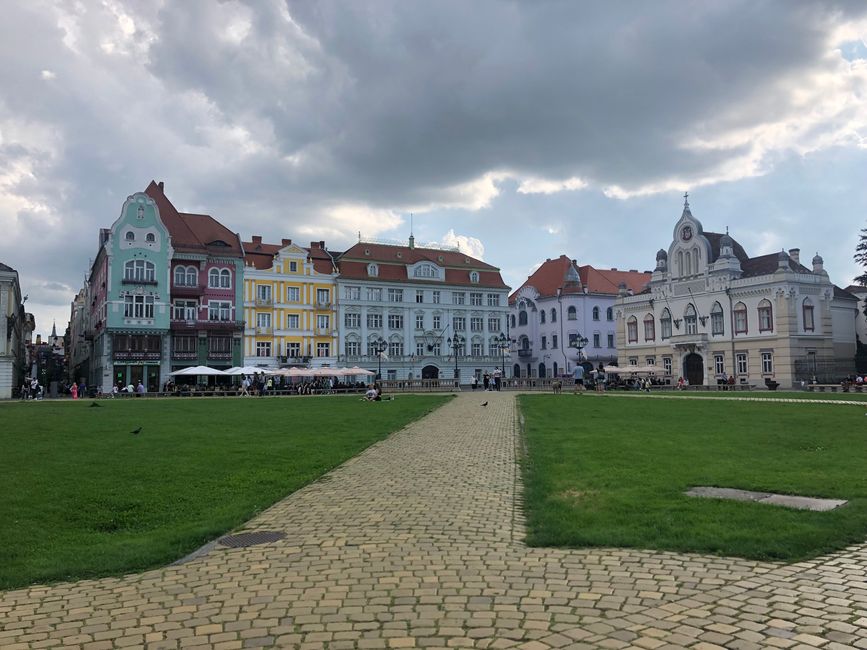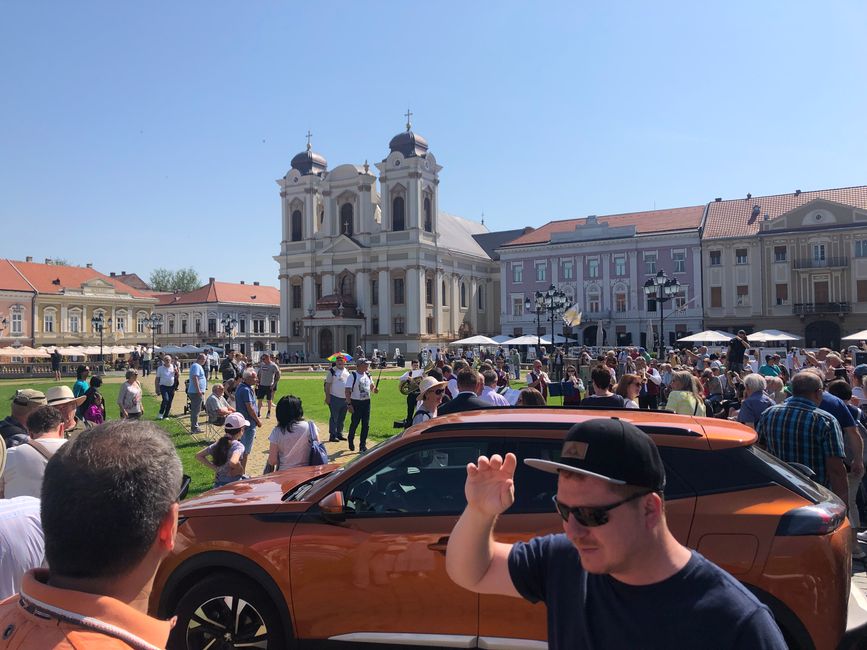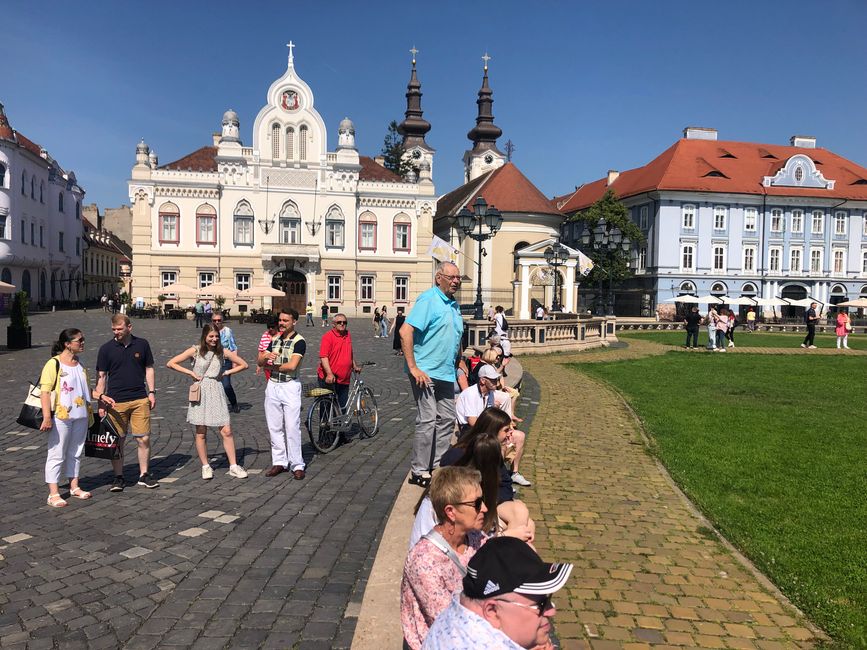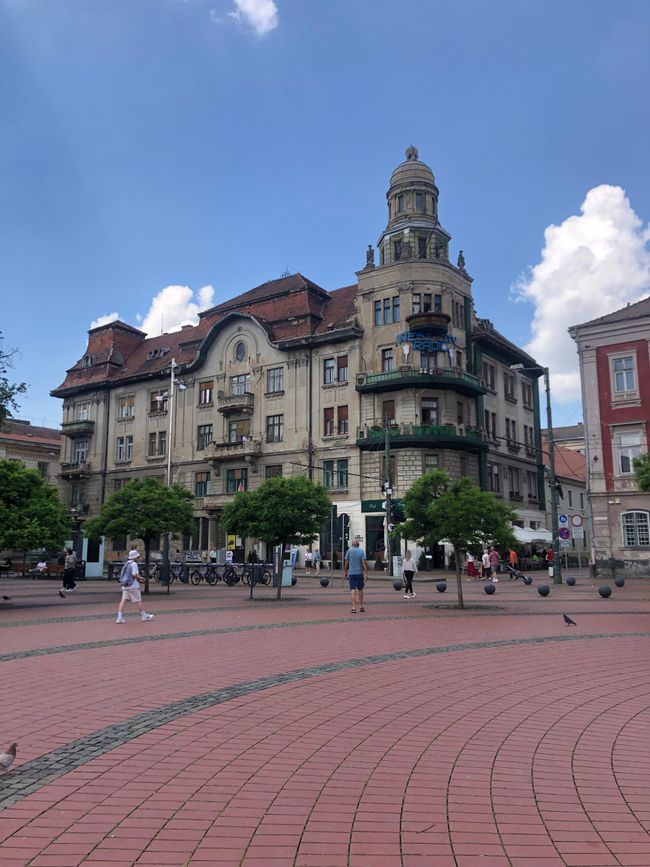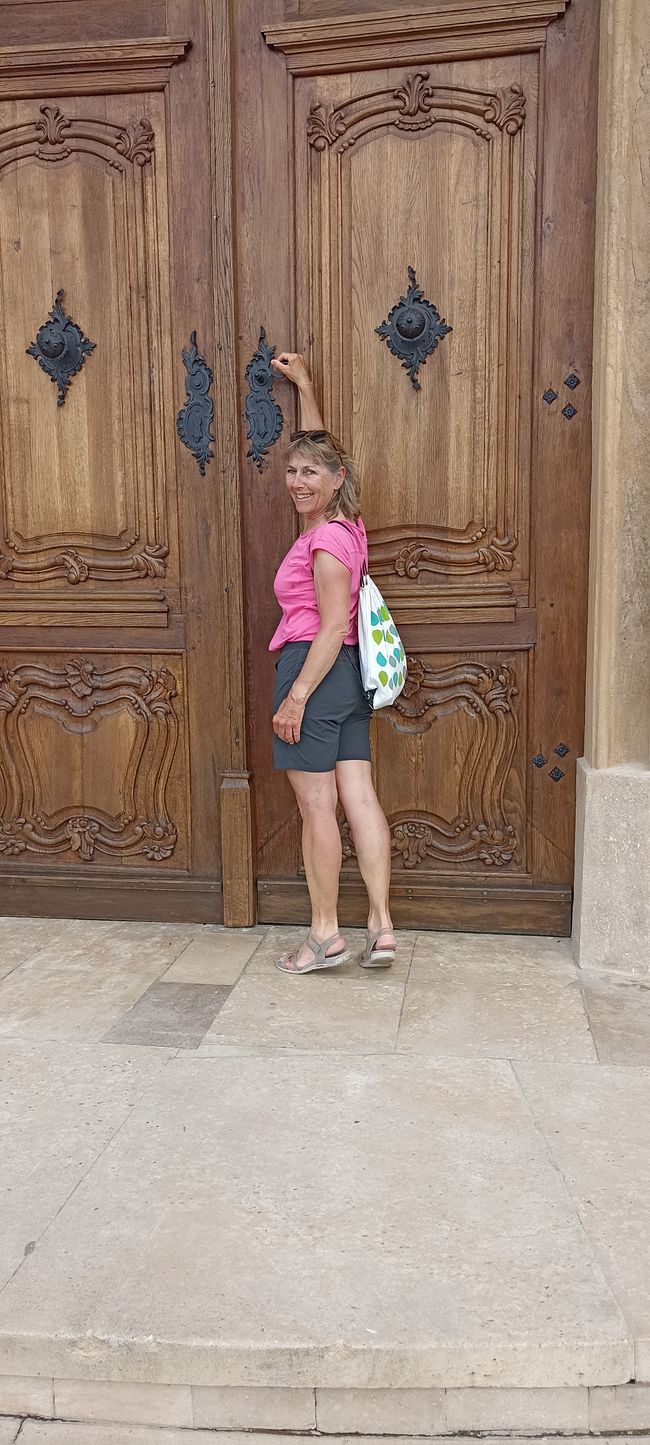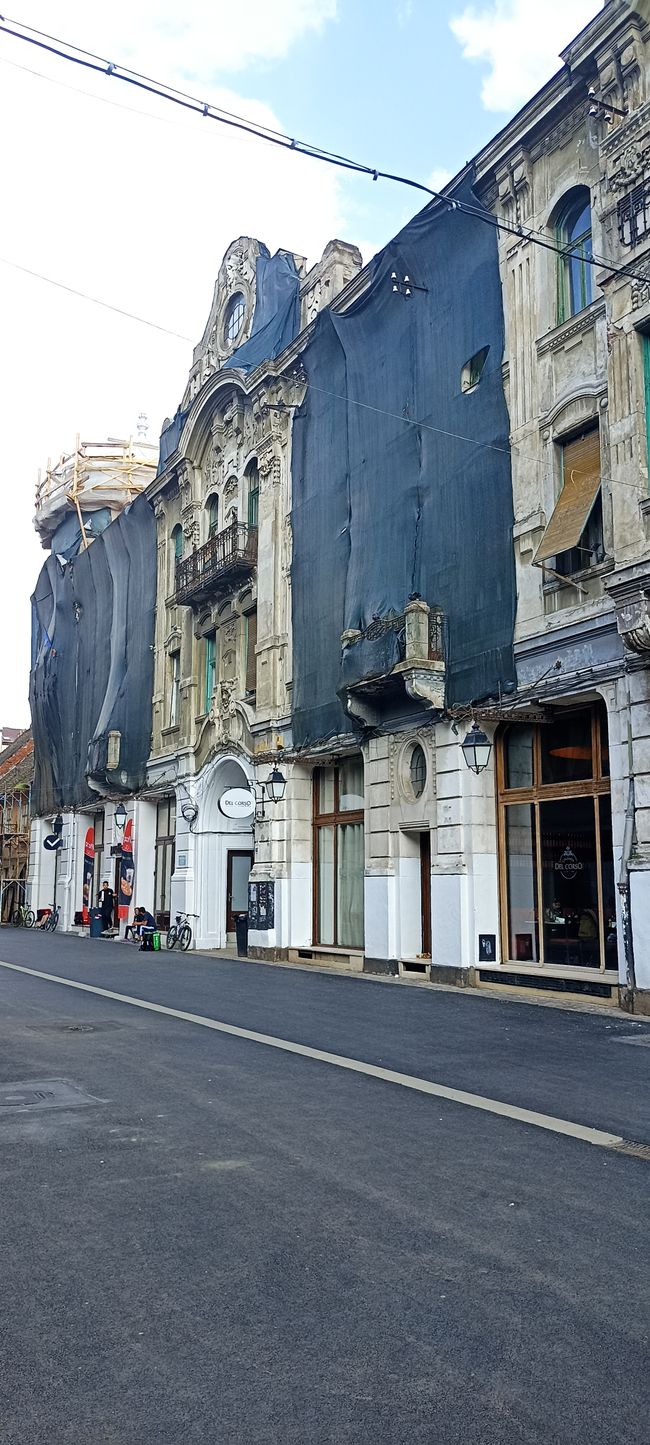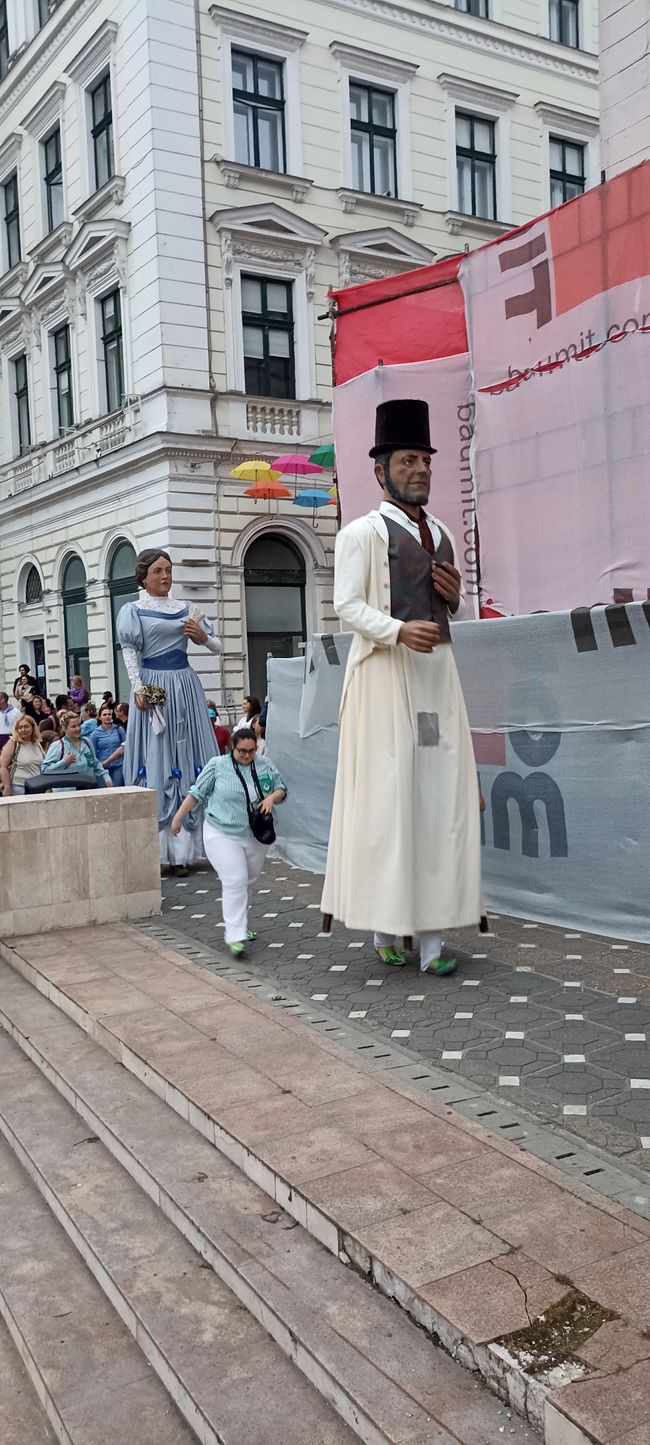In the homeland of the Banat Swabians
Објавено: 03.06.2023
Претплатете се на билтенот
ICT Cycling Day 7: Jimbolia - Timisoara 60 km
The cycling day is quickly described: 15 km straight to the east, then turn right and 15 km straight to the south. It is a vast plain on both sides of the road: the granary of Romania! Before we ride the 30 km on the dam of the Begakanal to Timisoara, we meet another long-distance cyclist for the first time. He comes from Dresden and started there over two weeks ago. He has until the end of October and wants to be in Georgia by then. He has already had two encounters with the infamous Romanian street dogs, which scared him quite a bit. Let's hope that we will largely be spared from them. If you follow our route closely, you will notice that we deviate slightly. Timisoara is so close and worth a visit for several reasons - it is the largest (300,000 inhabitants) and most important city in the Banat region with a rich and varied history, still a multicultural city today, from which the Romanian Revolution spread in 1989, with numerous beautifully restored buildings from the Baroque period and Art Nouveau. And Timisoara is the European Capital of Culture 2023 - and has a German mayor, born in Lörrach! Along the generous parks along the Begakanal, we reach the city center and first come across the large Orthodox Cathedral. Via a wide pedestrian area, we reach the Opera Square with the National Theater and Opera, as well as the impressive Art Nouveau building of the Politehnica. Next is Freedom Square with the Old Town Hall and the statue of St. Nepomuk, which commemorates the victims of the plague. The Urinii Square, often also called the Cathedral Square because of the Roman Catholic Church, is the oldest historic square in Timisoara. Generously laid out, surrounded by Baroque palaces and churches, it makes a big impression on us. After extensive exploration of the city, we enjoy our dinner directly on the Bega river, where the heavy evening thunderstorm doesn't bother us.Friday, June 2nd: Rest day in Timisoara - in the footsteps of the Banat Swabians
In the morning, shortly after 10 o'clock, we are on the Cathedral Square, where several hundred Banat Swabians have already gathered for the opening of the Banat Days. Right at the front is the trailer with the replica of the Ulm boat, which Erich Mayer from Oggersheim drove here together with his wife. We met the two of them two days ago in Jimbolia (Hatzfeld), and they are very happy that we came, as promised. People here know each other from past days and various homecoming events. In the various speeches, we heard that for about 10,000 Banat Swabians, the suffering did not end after returning from Russia. They were resettled by the Romanian government to the Baragan Steppe east of Bucharest to make it arable land. There were many casualties, and the survivors were allowed to return to their home villages in 1956. Erich Mayer explains the history of the Ulm boat in a speech, with which many people sailed down the Danube from Ulm in the 18th century to the new settlement areas of the Habsburgs, which had been abandoned by the Ottomans. They then reached their new home in Banat on foot or with simple carts. The Ulm boat was only intended for one-way trips, and so the boat transported with the trailer remains here in Timisoara, namely in the house of the Adam-Müller-Guttenbrunn Foundation. On the Cathedral Square, there is also an exhibition of photos showing the everyday life of the Banat Swabians in the 20th century. And in the museum, there is a small exhibition of paintings by Banat painters. In the afternoon, the hall in the Adam-Müller-Guttenbrunn House is packed, and we sit as "strangers" among the Banat people. There is a lecture on the life and work of the most famous writer of the Banat, Adam Müller-Guttenbrunn. Afterwards, a theater group performs scenes from the author's most famous book, "Jakob and His Children," in the Banat dialect. It's good that we didn't miss out on that. We have gained many interesting insights into historical events that were previously unknown to us. We now know about the history of the Banat Swabians. It's great that we were able to gain such a deep insight through the chance acquaintance with the Mayer couple. On the way back, we pass by the German high school, which was also attended by Nobel laureate Herta Müller. She vividly processed the forced expulsion of the Banat Swabians in her novel "The Hunger Angel" (—> Reading recommendation).Претплатете се на билтенот
Одговори (1)
Larissa
Wo die Schwaben doch überall sind- schön, dass ihr euch die Zeit genommen habt, um dieses einzigartige Ereignis zu bekommen . Das Buch steht auch noch auf meiner Liste..
